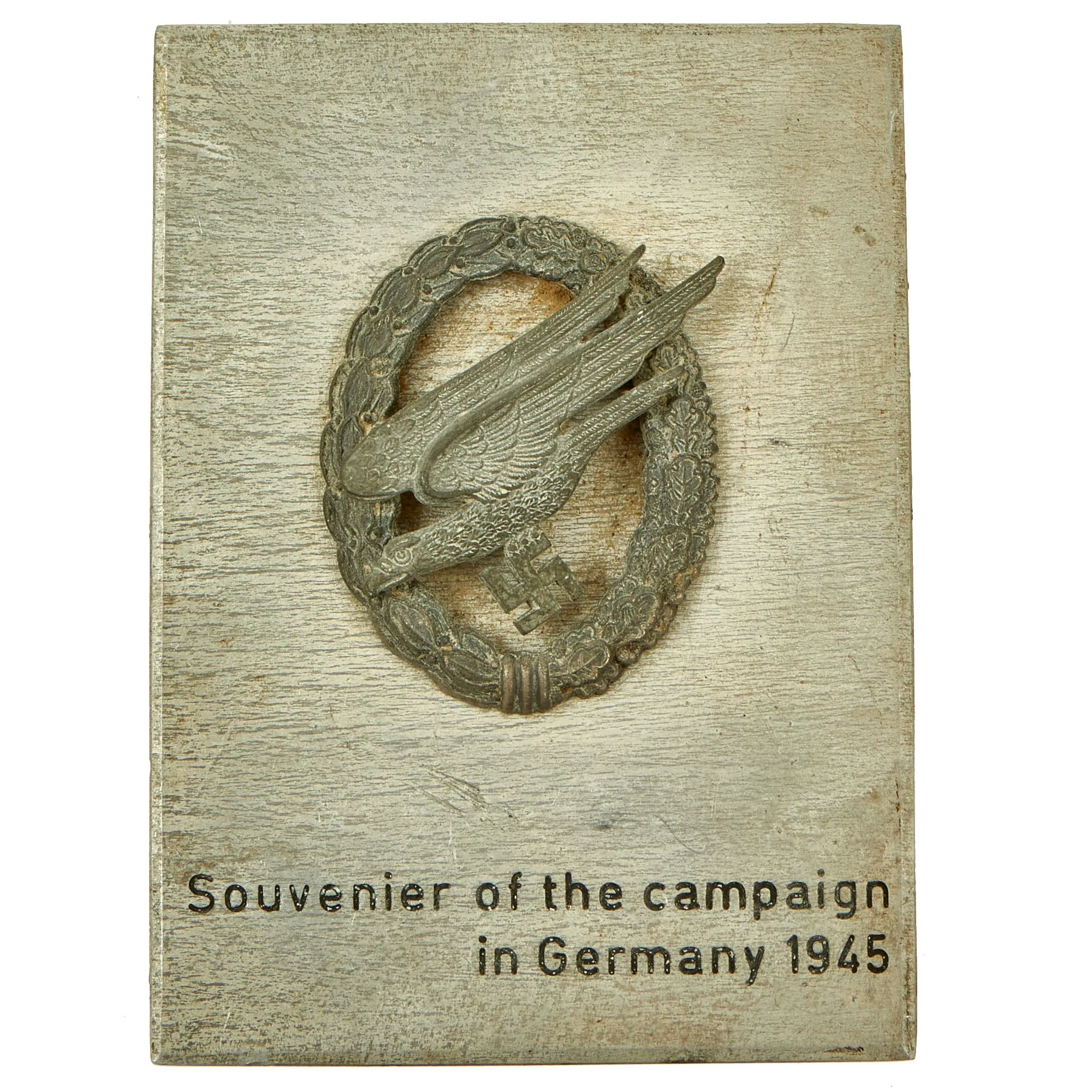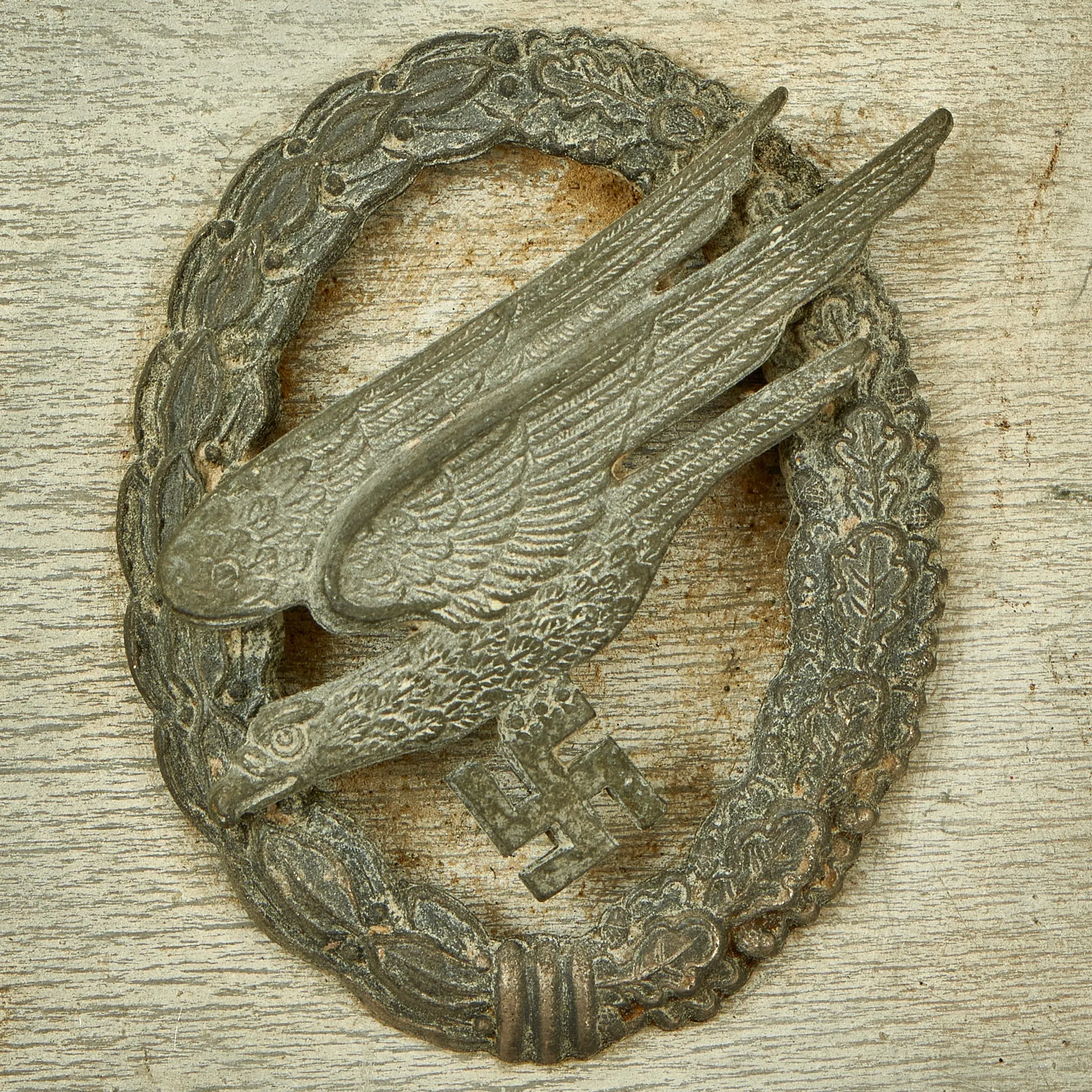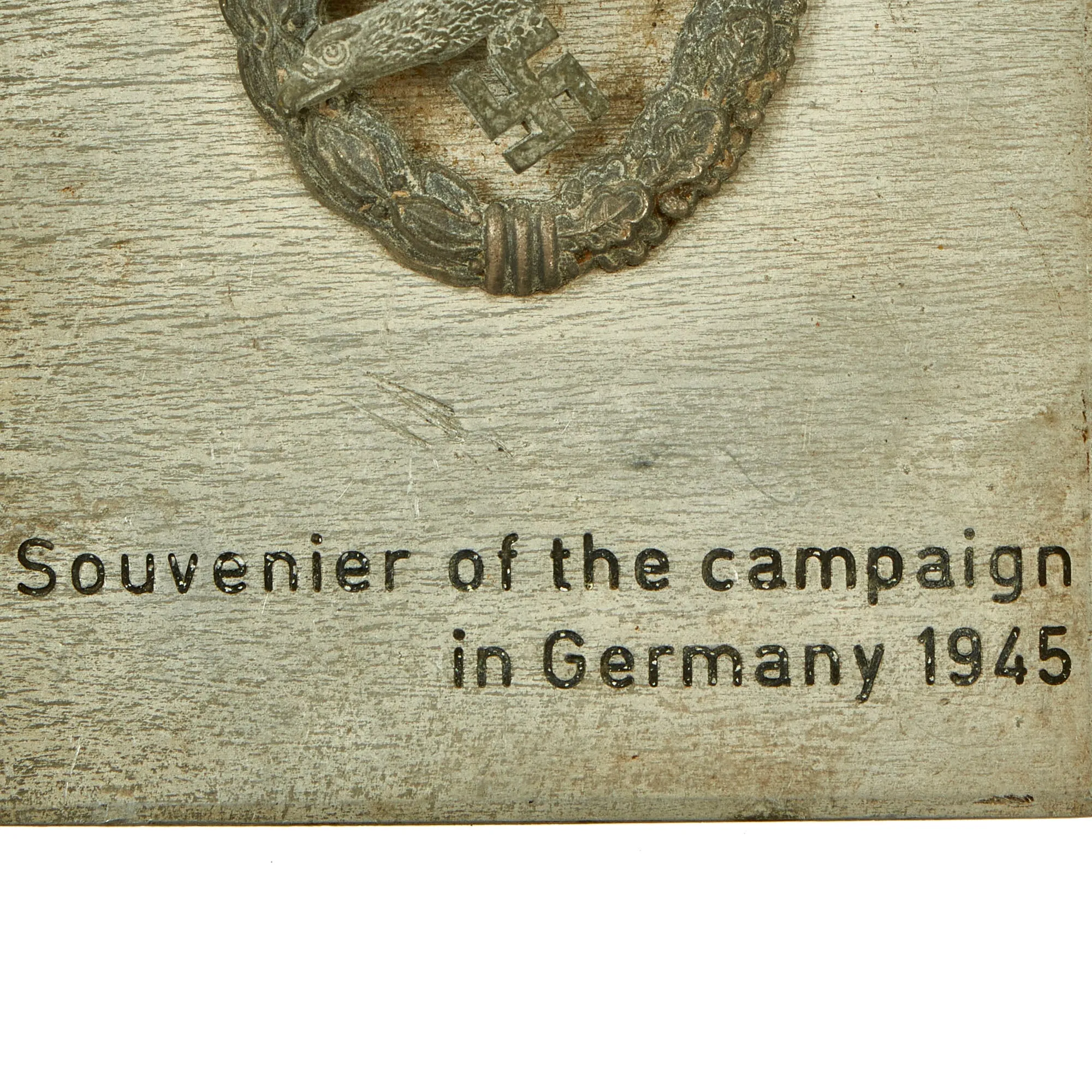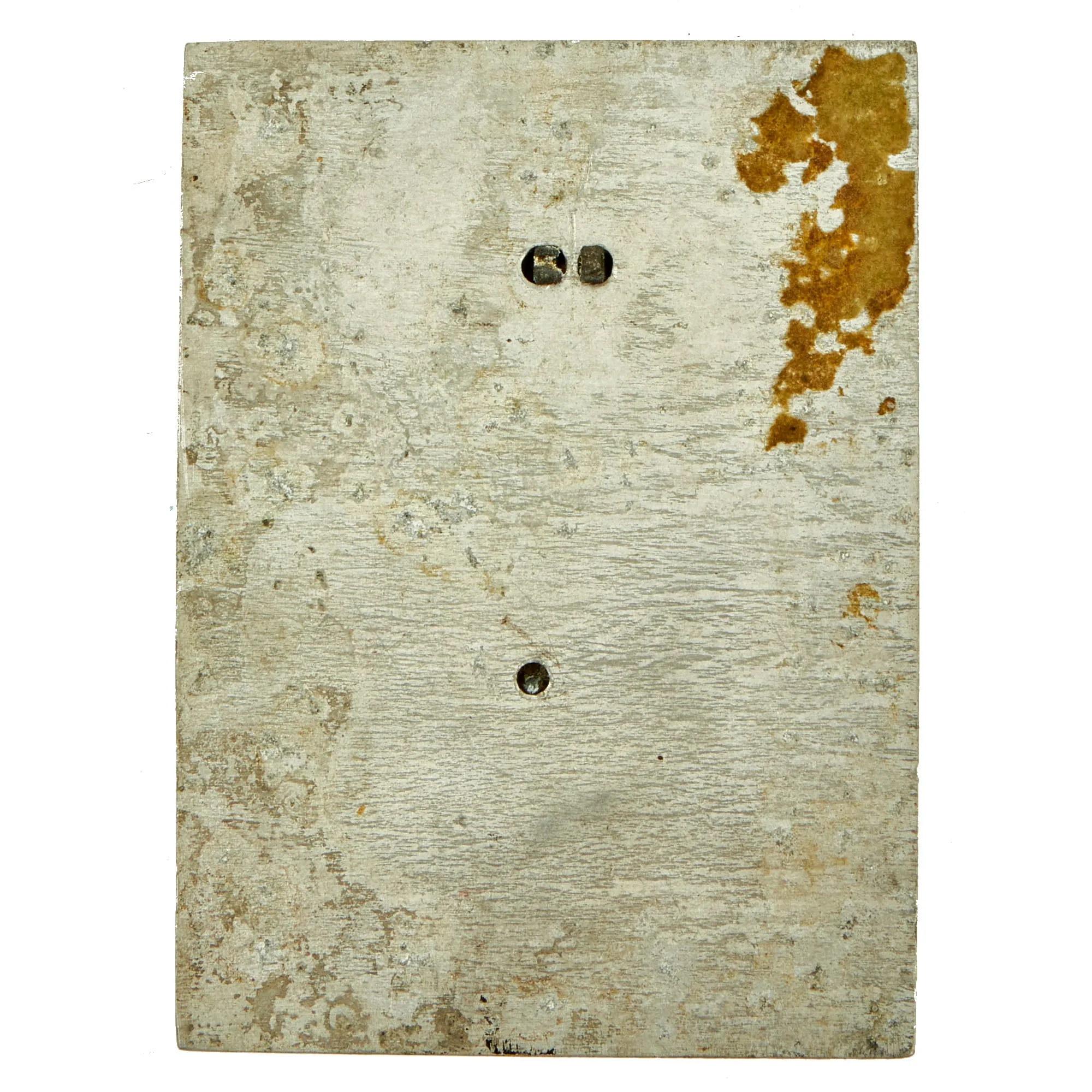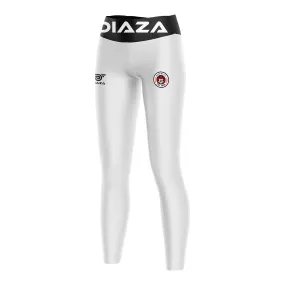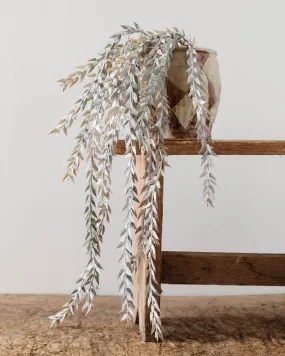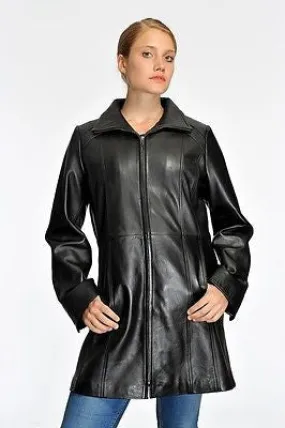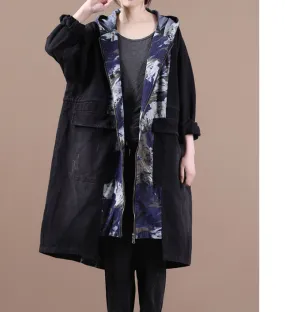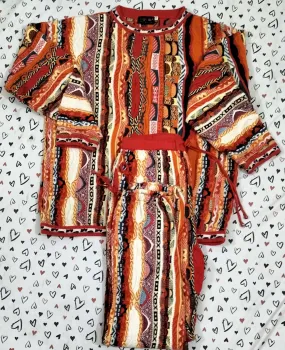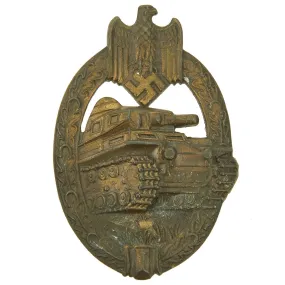Original Item: Only One Available. This is a fine quality manufactured example of a Paratrooper Fallschrimjäger badge, with a lovely patinated finish overall. This example has been mounted to a 3 1/8" x 4 5/16" aluminum plaque, that reads Souvenir of the campaign in Germany 1945 on the front. The rear has holes where the remains of the pin catch hinge and hook were used to attach it, possibly also using a bit of glue.
The basic design of the badge is a half Oak Leaf and half Laurel Leaf wreath, with a "Diving Eagle" clutching a Swas (hook cross) in the middle. It looks to be of zinc construction, which originally was silver washed on the wreath and gold washed on the eagle. Virtually all of the original finish has worn away or tarnished, giving it a fantastic look.
A very nice souvenir from the European Theater of WWII, mounted on a custom display plaque and ready to display!
The Parachutist Badge (Fallschirmschützenabzeichen) was a badge awarded to qualified parachutists of the Wehrmacht and the Waffen-SS of NSDAP Germany. The badge was first established by order of Hermann Göring on 5 November 1936. It was originally awarded to Luftwaffe personnel after completion of the required number of six jumps. After this they were eligible to become a Fallschirmjäger (paratrooper).
The badge depicted a diving eagle with a swas in its claws surrounded by a silver wreath. The original construction was made of "gold-finished bronze" for the eagle and "oxidized silver plate" for the laurel leaves. In 1937, the construction of the badge changed to aluminium. In late 1942, the construction was changed again to a metal alloy. A cloth version of the badge was also authorized in 1937, to be worn on a flight jacket. A recipient had to re-qualify for the badge each year.
An army version (Fallschirmschützen-Abzeichen des Heeres) was later introduced (1 September 1937), with the swas relocated to the top of the wreath and surmounted by a smaller upright eagle. As with the Luftwaffe, a recipient had to re-qualify for the badge each year. In 1936, the army ordered the institution of its own parachute company, which was expanded to a battalion in 1938. When the army parachute units were transferred over to the Luftwaffe in 1939, the former army soldiers continued to wear the army version of the Parachutist badge. The Waffen-SS personnel of the 500, 501 or 502 SS-Parachute Battalions were awarded the Luftwaffe badge after they passed the jump and other test requirements
The term Fallschirmjäger, often written Fallschirmjaeger in English, is from the German Fallschirm "parachute" and Jäger, the light elite infantry of the Prussian army. This term was then applied to all German paratroopers. Fallschirmjäger of Germany in World War II, were the first to be committed in large-scale airborne operations. They came to be known as the "Green Devils" by the Allied forces they fought against and were some of the best trained most lethal troops of the German war machine.
The Luftwaffe, the air force of the German military during the Third Reich, was established in 1935. Over the next 10 years, Luftwaffe troops wore a huge variety of uniforms. Enlisted men generally wore uniforms issued from military depots. Most enlisted soldiers had wool trousers and a short jacket with two internal lower pockets, called a Fliegerbluse, as well as a dressier 4-pocket tunic, the Tuchrock. Officers wore the same general uniform styles, but as officers had to supply their own uniforms, they usually wore tailor made versions. There were also myriad varieties of specialized uniforms worn by certain units or in specific situations, from the tuxedo-style “gala” formal wear uniform of the pre-war period, to the plain coveralls worn by crews of anti-aircraft cannons. There were work uniforms, tropical and summer uniforms, and camouflage clothing for airborne troops and other Luftwaffe soldiers in ground combat. Flight crews had their own specialized gear, including leather jackets and warm, electrically heated suits. Most but not all Luftwaffe uniform jackets bore the Luftwaffe emblem of a flying eagle holding a swas.




